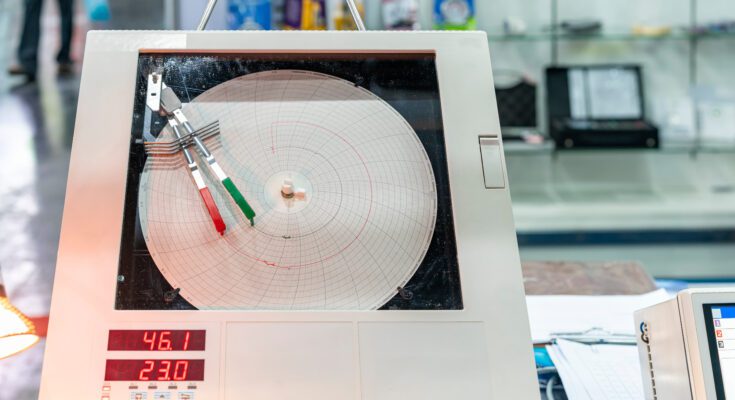Chart recorders are a staple in many industries. From power plants to the healthcare industry, data monitoring is necessary to keep employees working in safe conditions and creating high-quality results. If you’re unfamiliar with the industrial applications of chart recorders, continue reading to learn more.
1. Streamlining Manufacturing in Product Creation
Data logging streamlines manufacturing by monitoring essential components that produce consistently high-quality and safe products. With their visual charts, operators can quickly spot fluctuations, diagnose the issue, and adjust the system. That’s why chart recorders are essential for maintaining high-quality product formation.
2. Safeguarding the Effectiveness of Pharmaceuticals
Medications are highly sensitive; they require close monitoring of temperature and humidity during creation and storage. If there are any deviations, the potency of pharmaceuticals will degrade and become unsafe and ineffective. Chart recorders continuously monitor these parameters to adhere to quality control and ensure patients receive the best treatment possible.
3. Monitoring Environmental Conditions in Laboratories
Accuracy is of the utmost importance in laboratories. There are many types dedicated to science, including clinical, physics, chemistry, and research laboratories.
These facilities demand close and continuous monitoring of environmental conditions to protect sensitive contents and produce profitable results. Measuring temperature, humidity, and pressure ensures the integrity of each development.
4. Ensuring Quality in Water Treatment Plants
Water treatment plants depend on meticulous monitoring to produce clean and safe water for communities. Chart recorders facilitate this by continuously tracking variables such as pH levels, turbidity, and chemical concentrations. The data collected provides a visual representation of the water treatment process, enabling operators to promptly identify and correct any anomalies.
5. Strengthening Safety in Power Plants
Power plants, whether they’re nuclear, coal, or renewable energy based, require precise monitoring to ensure safe and efficient operation. Chart recorders track variables, including temperature, pressure, and flow, in real time. In case of any deviations from the norm, the recorded charts serve as evidence for troubleshooting and corrective actions.
The recorded data helps in predictive maintenance to maintain operational efficiency and decrease the risk of injury. With minimal downtime and proactive maintenance, chart recorders are essential tools for power plants.
The industrial applications of chart recorders are vast. Although digital alternatives exist, chart recorders’ ease of use and reliability prove that they’re indispensable in value.



